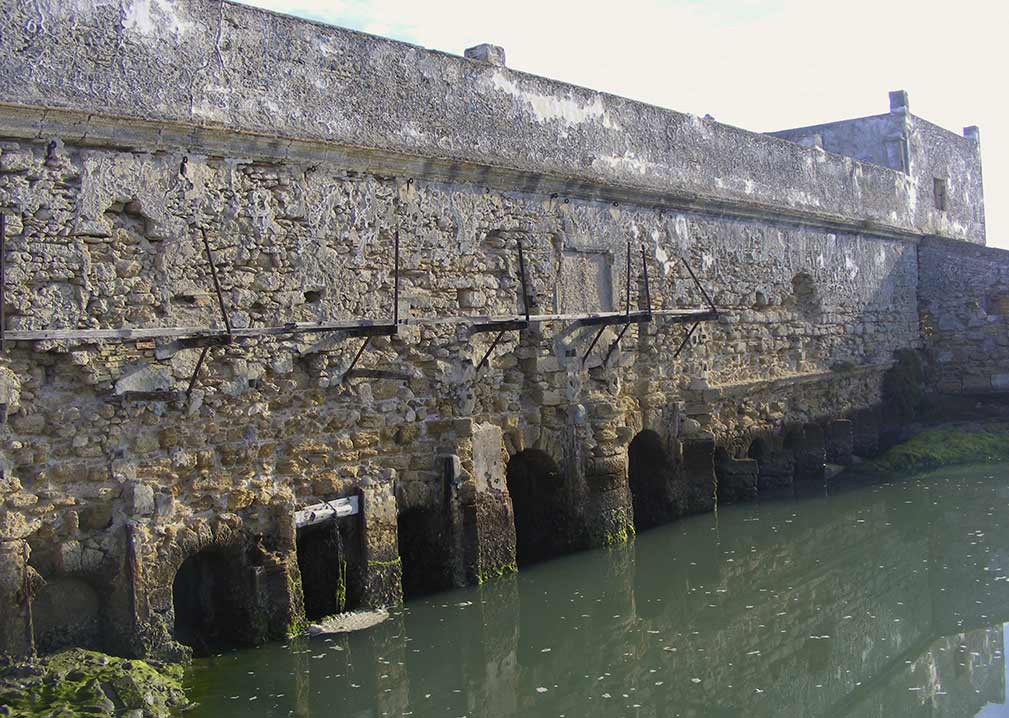Harnessing the Power of the Tides


The tides are the periodic rise and fall of the ocean's surface caused by the gravitational pull of the moon and the sun. This natural phenomenon has been harnessed for centuries for a variety of purposes, including navigation, aquaculture, and power generation. This article will explore the history of tidal energy, from its early use by ancient civilizations to its current status as a promising renewable energy source. The article will discuss the different types of tidal energy, the challenges and opportunities facing the tidal energy industry, and the future of tidal energy.
Energreen 2023-12-23
The steady ebb and flow of the tides has captivated humans throughout history. Civilizations have sought to understand and harness the tremendous renewable power contained in these tidal movements. While tidal energy technology has advanced significantly in modern times, efforts to tap into tidal power stretch back thousands of years.
The Romans and Ancient Greeks used tidal mills over 2,000 years ago, demonstrating an early ingenuity around renewable energy. These ancient tidal mills utilized the flow of tidal currents to turn water wheels and grind grain. Beginning in the Middle Ages, more advanced tidal mills were constructed along coastlines in Europe. These mills used not just tidal currents but also tidal differences in height to drive water wheels. By the 18th century, there were over 750 tidal mills dotted along European shorelines.

The Industrial Revolution brought further innovation in tidal energy. In 1966, the first commercial tidal power station opened along the Rance River in France. This facility uses tidal barrages and gates to capture water and then release it to turn turbines. It produces over 500 million kWh annually, powering the homes of approximately 250,000 people. The Rance Tidal Power Station represented a breakthrough, proving the viability of tidal power on a large scale.

In recent decades, technology has enabled new approaches to tidal energy, moving beyond tidal barrages which can impact wildlife. Tidal stream generators are now being tested and implemented. These devices sit on the seafloor and capture energy from fast tidal currents, without dams or disruption to marine ecosystems. Companies like SIMEC Atlantis Energy are installing giant underwater tidal turbines, producing clean electricity from the motion of the tides.
One exciting innovation is bidirectional tidal power plants. These facilities harness both the ebb and flow of the tides. Turbines capture energy as water moves in and out of estuaries and bays. Leading the way is the 320 MW Swansea Bay Tidal Lagoon in Wales, which is on track to begin construction within the next few years. Around the world, governments are also funding major tidal power projects and feasibility studies as the technology gains momentum.

Tidal power holds great potential as a renewable energy source. The natural ebb and flow of the tides is driven by the gravitational forces of the moon and sun. This makes tidal energy completely predictable, unlike wind or solar power. Water is over 800 times denser than air, so tides contain vast amounts of kinetic energy. The oceans are constantly in motion, making tidal power an inexhaustible resource.
Harnessing just a fraction of the energy in tides around the U.K. and U.S. coasts could produce tens of gigawatts of clean, renewable electricity. The predicable nature of tides enables tidal power to provide reliable baseload energy to grids. Tidal facilities also have lifetimes of over 100 years. Significant tidal resources exist near major coastal cities, making distribution easier. These advantages mean tidal power can play a key role in the global clean energy transition and fight against climate change.
While promising, tidal energy technology still faces important challenges as it continues to evolve. Capital costs of building tidal facilities remain relatively high. There are also ongoing concerns about the potential environmental impacts of large-scale tidal stations. However, impact studies and monitoring efforts increasingly inform project design and operations. With thoughtful siting, tidal power can coexist sustainably alongside coastal marine ecosystems. More testing is still needed to determine optimal tidal turbine and generator designs. But engineers continue to refine technologies to improve efficiency and lower costs.
Looking ahead, the future is bright for tidal power to make substantial contributions to the world's renewable energy mix. Some analysts project that tidal energy could provide up to 20% of global electricity demand within the next few decades. With increased investment and research, tidal energy technology can progress to achieve its vast potential. Our growing knowledge of marine environments will enable responsible, sustainable deployment. The predictable power of the tides, if harnessed appropriately, promises to produce clean and reliable energy far into the future.
Atlantis Operations (UK) Ltd. https://atlantisresourcesltd.com/
Tethys. "Annex IV 2016 State of the Science Report: Environmental Effects of Marine Renewable Energy Development Around the World." June 2016. https://tethys.pnnl.gov/publications/state-of-the-science-2016
Verdant Power. https://www.verdantpower.com/technology/